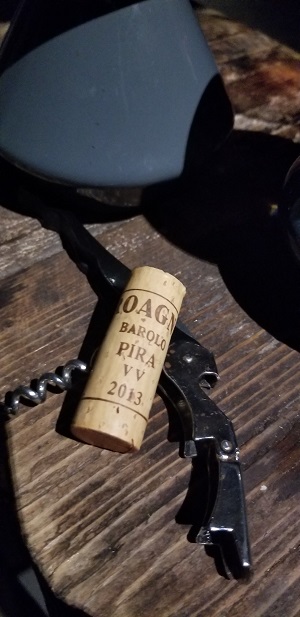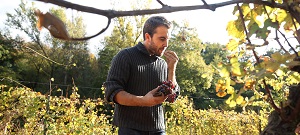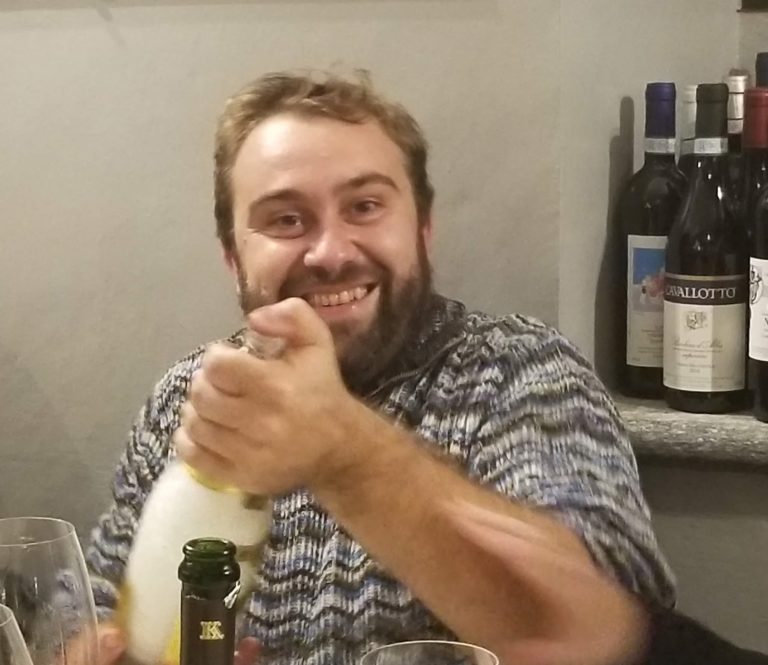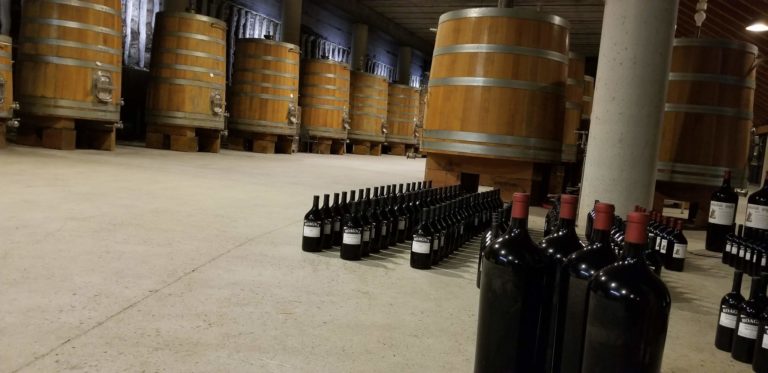The fine estate of Roagna has long roots in the commune of Barbaresco, having been started very early in the twentieth century by Vincenzo Roagna. Vincenzo passed on the reigns to his son Giovanni Roagna, who in his turn saw his son Alfredo succeed him as the head of the estate. Today the property is run by Luca Roagna, the fifth generation of the family. Luca was born in 1980, and succeeded to winemaking for the property soon after his graduation from oenological school in 2001. The style of the estate’s wines has been carefully passed down through all five generations of Roagna family, with the wines made in a very traditional and classic style. These are deep, complex and structured wines that are built to age and handsomely reward cellaring.
The heart of the Roagna estate is its six and a half hectares of vineyards in the commune of Barbaresco, most of these lying in the fine cru of Pajè. From the Pajè vineyard the Roagna family now makes three distinct cuvées, a Barbaresco “normale” labeled as Barbaresco “Pajè,” a Barbaresco Paje Vecchie Vite and “Crichët Pajè” – made from the crest of the Paje cru. In 1989 the family’s long-held aspirations of owning top level crus in Barolo comparable to their Pajè holdings in Barbaresco came true, when they purchased a parcel historically known as La Rocche e La Pira, in the fabled village of Castiglione Falletto. Through the 2004 vintage, wines from that Vineyard were labelled as either Barolo “La Rocca e La Pira” or Barolo Riserva “La Rocca e La Pira.” For the 2005, 2007 and 2008 vintages, wines from that vineyard were labelled as “La Pira” or “La Pira Vecchie Vite,” although the fruit was sourced from the same vineyard. It was changed again beginning with the release of the 2009 wines – they now have to be labelled with simply “Pira” which is the new official name of the vineyard according to the new disciplinary for the Barolo appellation. There will also sometimes be a Barolo Pira Vecchie Vite selection from the oldest vines in the cru and he will still occasionally release a Riserva selection: a barrel or barrels of the VV which were held back for additional time in the cellar.
The vinification techniques employed in the Roagna cellars have not changed a bit with Luca Roagna taking the helm. The fermentation still includes a full sixty day maceration before aging in large, Slavonian oak botti for anywhere from three to five years (depending on the quality of the vintage) prior to bottling. The wines are bottled unfined and unfiltered, and often the estate will also hold back the wines for several years of further bottle aging prior to release. In addition to their fine Barbaresco and Barolo bottlings, the property also makes a Nebbiolo Langhe Rosso cuvée from younger vines in their Barbaresco and Barolo holdings, a chewy and intensely flavored Dolcetto, and a white wine that is a blend of 95% chardonnay and 5% nebbiolo (vinified without the skins) which they label as Langhe Bianco Solea. The Langhe Bianco Solea is held for three years prior to release by the winery, and is a medium-full, fresh and pure white that typically offers up an aromatic blend of pear, flowers, a touch of honey and pastry cream.
But as noted above, the heart and soul of the Roagna domaine are its Barbarescos and Barolos. The Barbarescos are deep, pure and soil-driven wines that offer up fine depth of black fruit, strong signatures of terroir, hints of licorice and fresh herbs and a judicious base of tariness. On the palate both Barbaresco bottlings are full-bodied and structured, with firm, well-integrated tannins that demand some time in the cellar before drinking. They have a superb track record for longevity. The Barolos are a bit more robust and show some red fruity character to go along with their core of black cherry fruit, anise, autumnal soil tones, tar and woodsmoke. On the palate they too are full-bodied and powerful wines, with fine balances and the potential to easily evolve in the cellar for thirty or more years. Like many traditional Barolo or Barbaresco producers, the wines of Roagna improve immeasurably if decanted for a significant period of time prior to drinking, even when the wines have spent a number of years in the cellar. The estate has a long and successful history, but also seems likely to jump up a notch in quality under the perfectionist regime of Luca Roagna. One day soon the fame of the winery will catch up with the outstanding quality of their wines.








